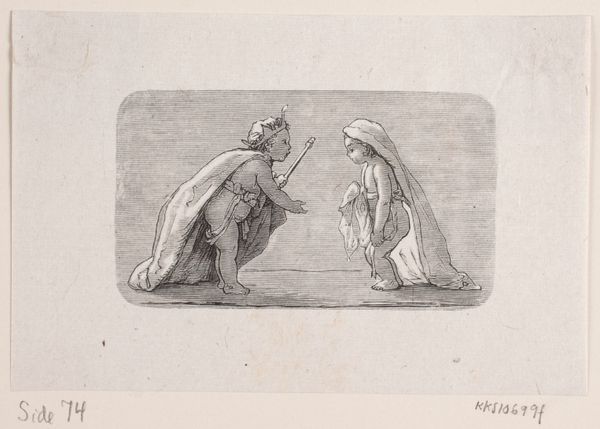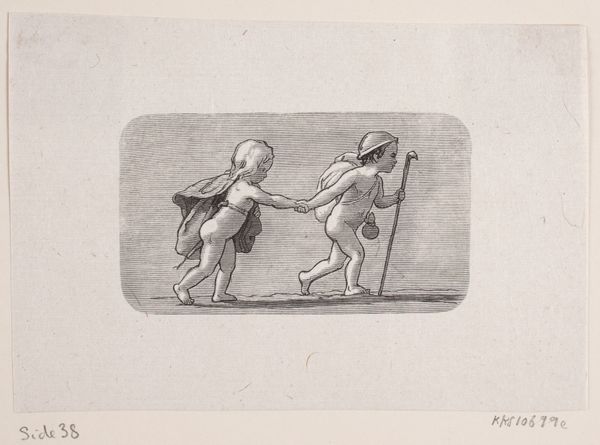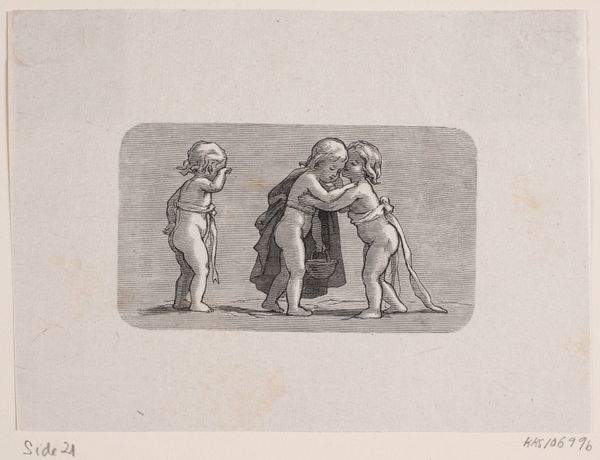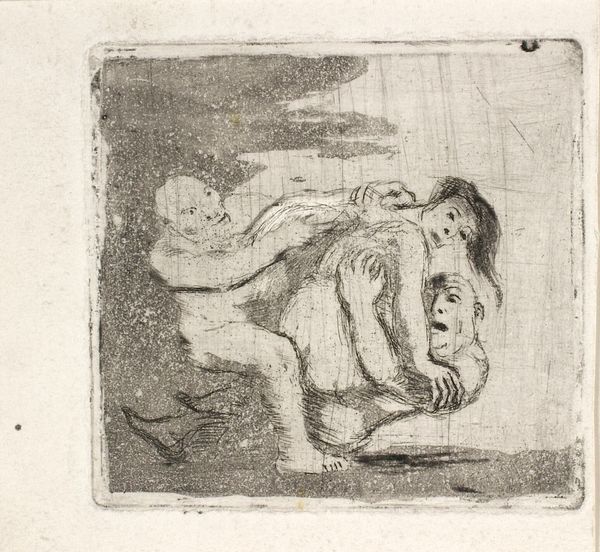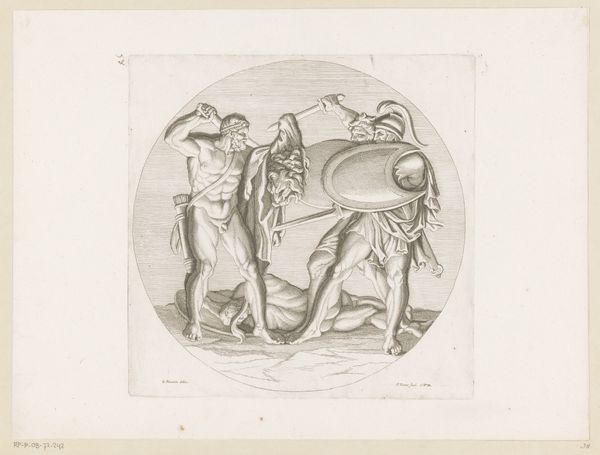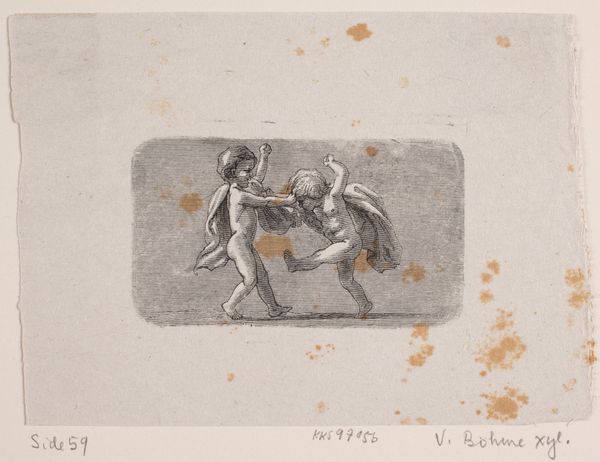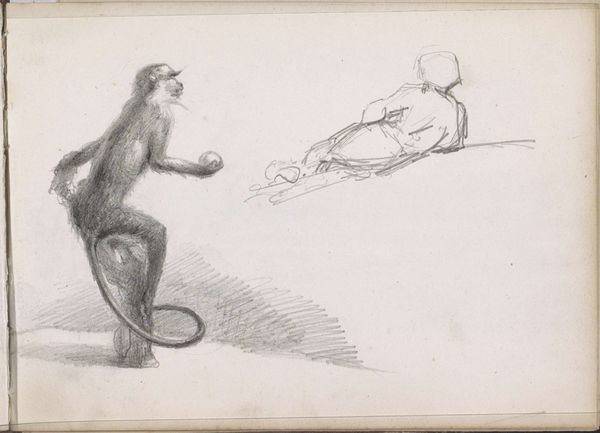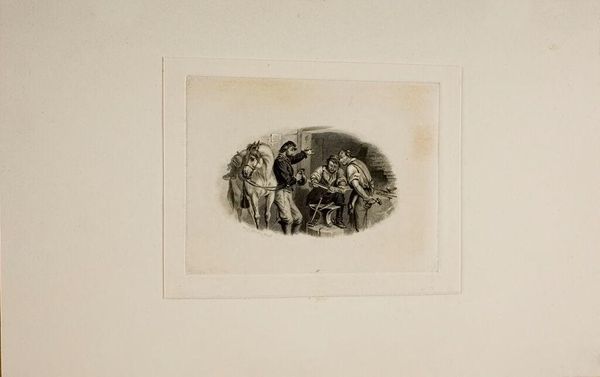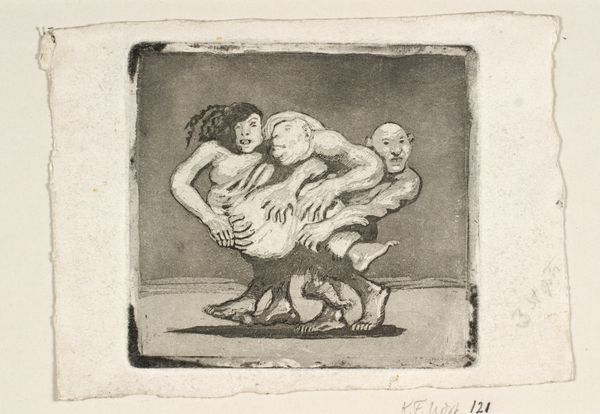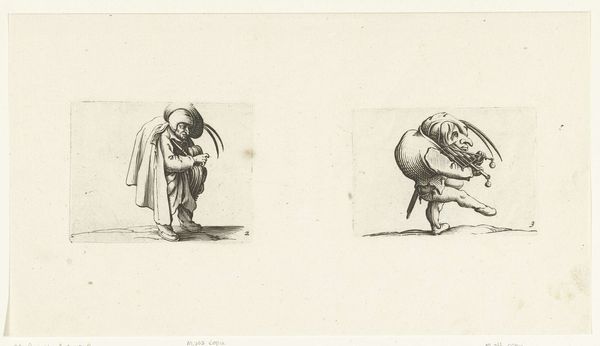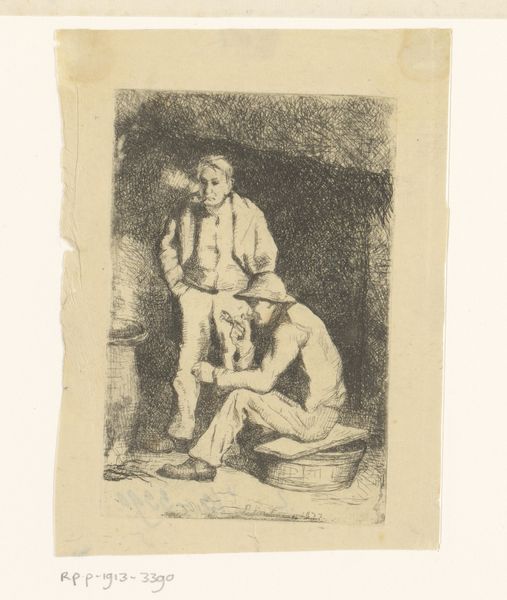
drawing, print, etching
#
pencil drawn
#
drawing
# print
#
etching
#
pencil sketch
#
figuration
#
pencil drawing
#
sketchbook drawing
#
history-painting
Dimensions: 86 mm (height) x 134 mm (width) (bladmaal)
Editor: Here we have an etching from 1878 called "Vignet til 'Indvielsen'," or "Vignette for 'The Inauguration'," housed at the SMK. It's a delicate image featuring two young figures, almost like cherubs, and they seem to be participating in some sort of ritual. What do you see in this piece? Curator: Immediately, I see the interplay of innocence and initiation. The figures, seemingly childlike, evoke a sense of purity often associated with beginnings. But consider the veil and the gesture of covering the head – these are loaded with symbolism. Does it imply protection, revelation, or perhaps even a loss of innocence? Editor: I hadn't thought about it that way. It almost seems like one figure is anointing the other, maybe inducting them into something. Is that something "Indvielsen" – "The Inauguration?" Curator: Precisely. Think about inaugurations - ceremonies marking transitions, the commencement of something new. The veil could symbolize the obscuring of the past or the unknown future that awaits. Consider too how frequently we represent abstract concepts through youthful figures – Justice, Hope, even Death. What cultural memory is evoked through this choice? Editor: So, the artist is using these universal symbols of youth and ritual to speak to a larger concept of starting anew? It’s like a visual metaphor. Curator: Indeed. And etching, with its delicate lines and gradations of tone, is perfectly suited to convey this sense of subtlety and nuance. Do you see how the cross hatching and delicate lines creates atmosphere? The dreamlike way in which forms and faces disappear into the hazy atmosphere around them? The use of what looks like innocent putti creates and undercurrent of dark intensity in a ceremony of “inauguration.” How does this impact your view of the image? Editor: Now I see so many layers. It's not just a simple illustration; it's packed with symbolic meaning. I initially saw it as a sweet image, but your insights reveal a deeper complexity. Curator: That's the power of iconography – to unearth the hidden narratives within visual forms and reveal how they speak to our collective memory. I think it can serve to question and illuminate aspects of the original narrative itself. What do you think? Editor: Definitely something I’ll remember to look for next time! Thank you!
Comments
No comments
Be the first to comment and join the conversation on the ultimate creative platform.
